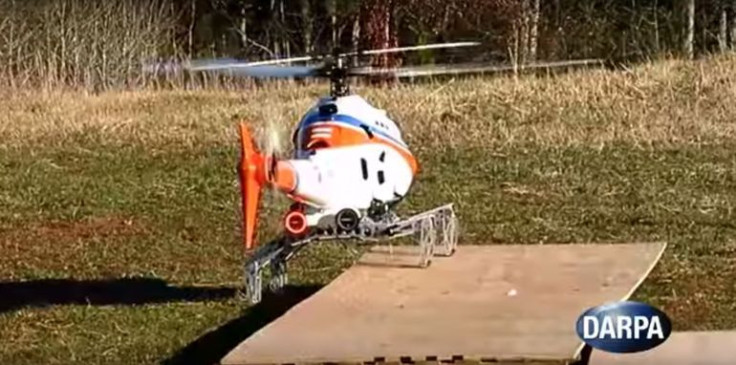Darpa's Helicopter Landing Gear Would Help Pilots Land On Mountains, Choppy Seas [VIDEO]

Darpa, the research arm of the U.S. military, is at work on a new technology that would allow American helicopter pilots to land their craft on any kind of terrain. It's an attempt to streamline the landing process, and possibly help manned helicopters land on mountainsides or in disaster areas strewn with large debris.
The U.S. Defense Advanced Research Projects Agency, together with the Georgia Institute of Technology, are developing landing gear that they say will reduce the risk of damage from hard landings by 80 percent. The system replaces current landing gear with four robotic jointed legs that fold up during flight then use sensors to stabilize the aircraft upon landing. Initial tests conducted near Atlanta showed that the landing gear can adapt to slopes as steep as 20 degrees, Foxtrot Alpha reported Sunday.
“The equipment – mounted on an otherwise unmodified, unmanned helicopter – sucessfully demonstrated the ability to land and take off from terrain that would be impossible to operate from with standard landing gear,” Darpa program manager Ashish Bagai told media outlets.
If all goes according to plan, adaptive landing legs might greatly expand the number of possible operations. It would be easier for military helicopters to land on naval vessels in rough seas, for instance, or conduct emergency recsue missions to save mountain climbers. The equipment might even work on moving terrain.
Researchers will continue testing the system on unamaned remote-controlled helicopters at a Georgia research facility, with plans to attach the robotic legs to a manned helicopter when possible.
© Copyright IBTimes 2024. All rights reserved.











